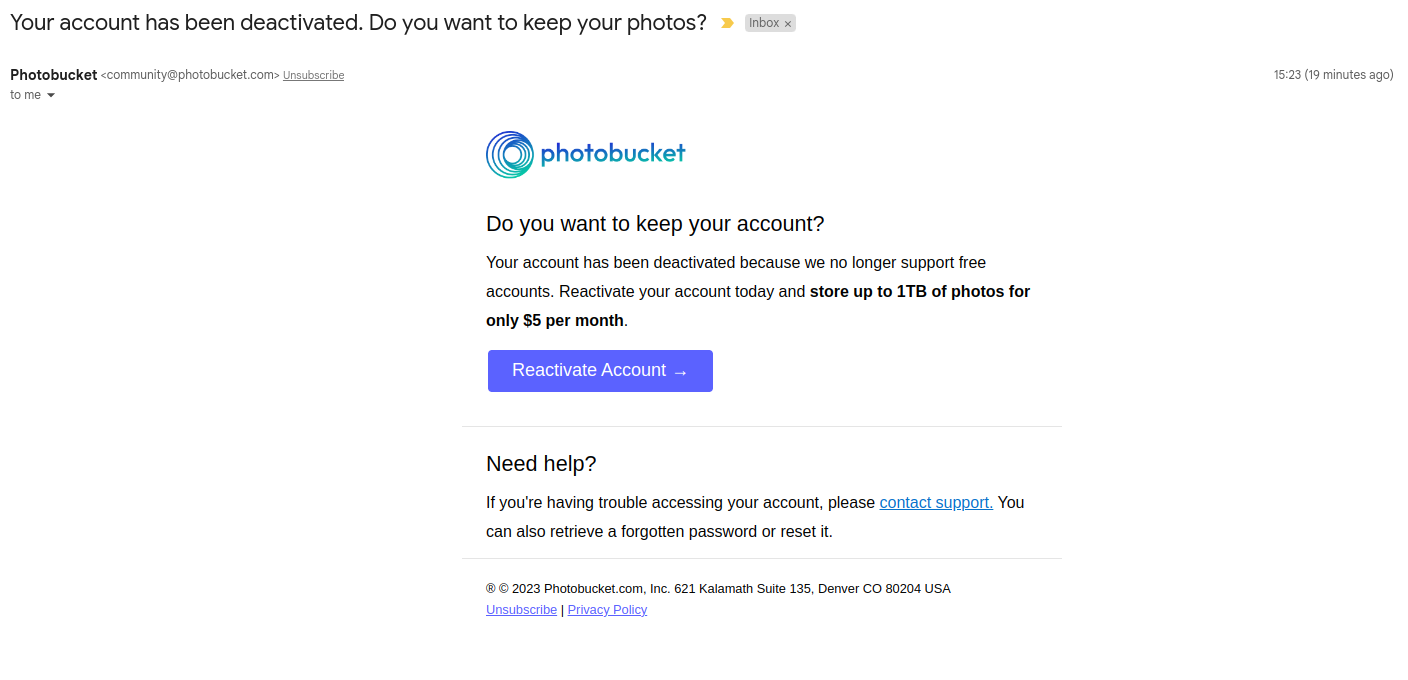Once upon a time, Ohio University student Alan Schaaf looked out at the state of free image hosting on the internet and saw that it was lacking. The scene was awash with usability disasters like the overcomplicated Photobucket and the steadily deteriorating, ad-infested ImageShack (which now litters the pre-2010s internet with the yellow frog gravestones of images it once hosted for free), both of which would cut off traffic to freely uploaded images that proved too popular.
No image host provided a painless, free and scalable way to upload pictures of your dog or contemporary memes such as rage comics so as to exchange them for praise and imaginary internet points on link-sharing sites such as Reddit. The tech-savvy and moneyed barons of the internet could share images hosted on their own websites, but most people just hotlinked. It was a dark time.
Being a generous soul, Schaaf decided to change all this with an image-hosting site of his own. Imgur was announced as a “gift to Reddit” on the 23rd of February 2009 and quickly became Reddit’s image host of choice. The reasons why are pretty obvious:
- Anyone could upload images without having to make an account and remember yet another password, let alone enter their credit card details.
- These images could be linked to directly and even embedded in pages without any of the viewers having to see any adverts, or even know that they were looking at something on Imgur.
- There were no traffic limits.
But it didn’t take Imgur long to learn that goodwill and upvotes did not pay server bills, and donations only went so far. Banner adverts made their debut on the platform about three months after its inception. Imgur was remarkably restrained about the volume of these ads, and magnanimously continued to allow direct image linking at the cost of untold theoretical ad dollars.1
Imgur continued to grow, moving from hosting provider to hosting provider, until it finally settled on AWS, like the rest of the internet. And as its bandwidth usage grew, so did its featureset. In January 2010, it became possible to create a user account on Imgur, which allowed one to manage albums of images, and to edit and delete previously uploaded images. Paid accounts followed shortly after, which removed some size limits and provided the site with another revenue stream.2
It is a truth universally acknowledged that a website in possession of a strong growth trajectory must be in want of a community. Such was the case with Imgur, and following the addition of accounts, Reddit-style comment trees and the ability to post images to a public gallery, one swiftly metastasized. Some members of this community (termed “Imgurians”, a word somehow more irritating than “Redditors”) were cross-posters from Reddit, but many more, especially as time went on, were complete newcomers.
During this time, Reddit itself also grew, and as it grew it continued to use Imgur more and more, with many subreddits outright requiring images posted to be hosted on Imgur, generally to avoid subjecting users to scammy, ad-ridden alternatives. The now-distinct Imgur community would see many Reddit-originated images in their public gallery and leave comments on them. As a result, an image uploaded for and initially popularised on Reddit would be the centre of two separate comment pages, one on Reddit, and one on Imgur.
Imgurians would remark with puzzlement on Reddit trends for which they had no context. Redditors, in turn, would disparagingly compare Imgurians to people living in a sewer, unaware of the city above. Theirs was of course the real community, and Imgur nothing more than a mutated image host.
In 2016, Reddit started hosting its own images for posts made on some of the most popular subreddits. This feature was soon expanded site-wide, basically deprecating the original purpose of Imgur. In light of this, Imgur’s cancerous community growth, so unsightly on what was once a simple, fast, no-nonsense image host, saved it from total obsolescence.
Modern Imgur’s interface is replete with voting arrows, faving hearts, colourful tags, and a panalopy of other features that mark it as a sugary, image-focused version of Reddit rather than the utilitarian file host it was born as. Click a link to an image page on Imgur, and you’ll be faced with all of this cruft while the actual image you’re there to look at loads excruciatingly slowly.
To its credit, Imgur still allows direct linking and embedding (as below), but it no longer advertises this functionality. It also still has a fairly painless anonymous image uploading, so a fair number of the vestiges of what it once was still remain. It’s arguably a bit schizophrenic.

The contrasts between Imgur’s evolution and that of, say, ImageShack, highlight how the web has changed between their respective heydays. When ImageShack became too popular with free users, it first tried to force people to view images on its site in order to generate ad revenue, and later morphed into a premium file upload service. When Imgur became too popular with free users, it morphed into a community site of its own, in order to generate ad revenue (and maybe premium ad-free-experience sign-ups?).
I think this is because on the internet of the 2000s, users might pay to be able to upload images somewhere that allowed them to hotlink those images to all the different forums, blogs and other websites they visited. But on the internet of 2021, users only visit four sites, so they’d better be able to upload images and talk about them on the same one.
And on neither of these internets has hosting images for free ever been a business model.
Postscript (2023-07-23)

-
Extremely theoretical dollars, as Imgur no-doubt would have crashed and burned with its target audience had it adopted such an approach so early in the game. ↩︎
-
Since late 2020, Imgur’s paid membership plan has been provided by Coil, a micropayments platform offering a twist on the Brave Rewards formula: instead of viewing ads to earn money to contribute to sites you visit, you can sign up for a $5 monthly Coil membership to get premium content and functionality across participating sites. This seems like a good model for an increasingly paywalled internet. ↩︎
 David Yates.
David Yates.